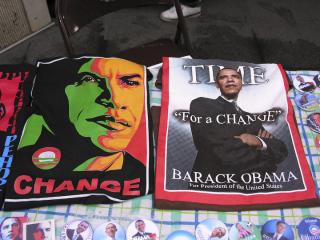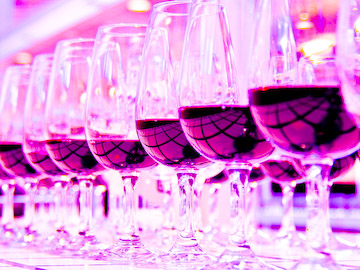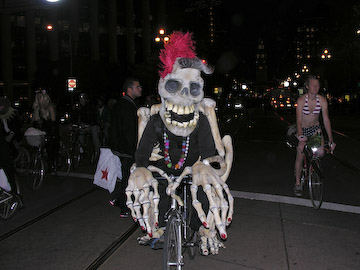A Wine Drinker’s Guide to 2009 Without Tears
POSTED ON 03/01/2009 Time for a Change
Time for a Change
Presumably the £10,000 Dorchester Krug Escape Package was devised before it became clear that belt-tightening and hatch-battening-down would be the order of the 2009 day. Maybe there are still a few oligarchs out there though who’ll go for the bells and whistles deal. After a slap-up champagne breakfast in the Krug Room, you’re whisked to the Eurostar in a Rolls Phantom and check into Paris’ 5-star Hotel Meurice for a spa and 3-Michelin star dinner. Next day you’re driven to Maison Krug for a private tasting with Olivier Krug, returning to Paris for dinner at 3-star Alain Ducasse - and then back home for baked beans on toast and Tesco’s Finest Prosecco. How the other 0.0001 per cent live.
Speaking of Tesco’s Finest, the traditional Venetian sparkler that tastes of fresh pears and has a touch of sweetness to it could be one of this year’s winners as the new drinking underclass’s ‘champagne’. It pops, fizzes and generally does a better job than Spanish cava of keeping the palate satisfied, as witness those from Tesco and M&S and a host of others now flooding the market before you can say St.Mark’s Square. In fact there are plenty of good value sparkling wines around that will substitute nicely as apéritifs and summer fizzes, especially champagne-method, cool climate sparklers from Tasmania, New Zealand and Crémant de Limoux from the Languedoc, all at around a tenner.
 Glass half empty?
Glass half empty?
In the world of table wines, there should be a trickle down effect from the classic European regions, so from cru classé to good cru bourgeois in Bordeaux, from the great vintages of 2000, 2003 and 2005 to the respectable but more reasonably priced vintages of 2001, 2002, 2004 and 2006, from premier cru burgundy and top rhônes to cheaper village burgundy and rhône. This will be accompanied by a drift from the generally pricier, so-called ‘classic’ regions of Europe towards the Mediterranean south and beyond to the better value regions and countries of the New World.
In France, the Languedoc will be the region to scour for a source of tasty, affordable reds, also gaillac and cahors. The new-wave Spanish reds from castilla y léon, campo de borja, bierzo, montsant and calatayud along with monastrell-based reds from jumilla will generally offer better value than ‘classic’ rioja, ribera del duero or priorat. Best value Italian reds will be the richly fruited aglianicos of basilicata and campania and dark cheryish nero d’avolas coming out of Sicily. Robust Portuguese reds from alentejo and douro are the ones to go for. On the white front, Italy’s deliciously full-flavoured verdicchio, fiano and falanghina will compete for attention with refreshing dry Spanish albariño and Austrian grüner veltliner.
 A scary ride is on the cards in 2009
A scary ride is on the cards in 2009
The shuffling of the New World pack is likely to see Australia lose its competitive edge to South Africa, Chile and Argentina. Argentinian reds, juicy malbec in particular, should play a starring role in 2009. And just as Australia loses out on the reds front, New Zealand sauvignon, for long ‘the new Sancerre’, could find itself ousted by aromatic sauvignons from South Africa and Chile, with riesling and gewürztraminer also playing a part. Look to Chile too for some of the best value pinot noir, certainly better value than, ça va sans le dire, burgundy. One temptation to be avoided in 2009 is the lure of the bogof and the dreaded supermarket ‘great value’ wines written about ad nauseam, suffice to say that value isn’t the word, especially now that Mr.D. has made wines under £6.07 dearer.
The best way of course to save money on wine this year is to give up drinking for a month. A radical solution yes, but tough times require tough solutions and it’s not necessarily the hardship you think it might be. Whether embarking on a health kick or doing it just to prove to themselves that they can, a growing number of people are sacrificing wine in January (or February because it’s shorter). It’s not as bad as it sounds, especially if you have a partner or friend to hold your hand and ideally a good juicer to knock out a few killer juices. On which note, a very happy and frugal new year to all readers.
Something for the Weekend
Under a Fiver
2008 Las Moras Bonarda, San Juan, Argentina
This vivid, bright red from the hot Tullum Valley in Argentina’s high San Juan region, is vibrant and tinged with a ripe mulberry fruitiness that’s juicy and gluggy with soft tannins and satisfyingly juicy fresh acidity. £4.99, The Co-operative.
Under a Tenner
2007 Joël Delaunay, Sauvignon de Touraine, Loire, France
When sauvignon blanc is as appetising as this mouthwateringly fresh, nettley example with its intense flavours of ripe gooseberry and its flinty, crisp dry mineral characters, you wonder if it’s worth bothering with Sancerre, much of which overreaches the price but not the high standards set by the Loire’s Joël Delaunay. £7.95, Lea & Sandeman, London shops ((020 7244 0522).
Splash out
2006 Langhe Nebbiolo, Piemonte, Aldo Vajra.
If you can’t stretch to Barolo, nebbiolo is often as good a choice if not better, because it’s made from the same classy Piemontese grape but usually costs half the price, and when it’s as well-crafted as this perfumed, intense, red berry fruity red from Vajra, with its elegant crisp freshness and food-friendly tannins, it can be as delicious as red burgundy’s pinot noir. Around £15.99, Bennetts Fine Wines, Chipping Campden (01386 840392), Ceci Paolo, Ledbury (01531 632976), The Fine Wine Company, Edinburgh (0131 669 7716), The Secret Cellar, Tunbridge Wells (01892 537981), Wimbledon Wine Cellar (020 8540 9979).
Ends

